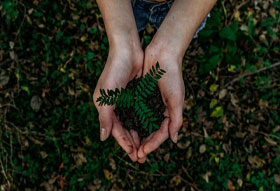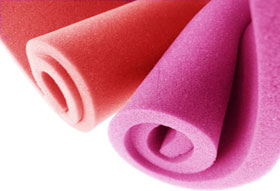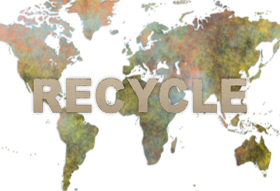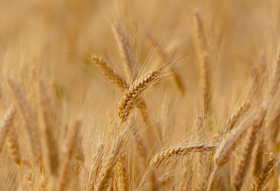
Latest Innovations in Polyurethane Foam

As an innovation-first UK manufacturer and supplier of foam, we at eFoam make every effort to identify the newest innovations happening within our industry. Ultimately, it is these new developments that will soon – either directly or indirectly – have an effect on consumers. This is particularly the case with regards to environmental efforts. As an ethical and environmentally-conscious supplier, eFoam continues to look for new ways to place this at the forefront of all operations.
Polyurethane foam is composed of a lightweight and malleable polymer and is frequently made into a number of everyday products, including sponges, insulation, footwear, mattresses and sofas.
In this blog post, we are covering 3 key innovations related to Polyurethane foam.
A) CO2 Polyurethane
One of the most interesting developments we have seen as of late is an innovation by researchers at the Fraunhofer Institute in Germany who have discovered a process to make polyurethane foam using carbon dioxide and recycled materials. In all, the development has enabled researchers to produce the foam we use and love in a range of applications in a far more sustainable way. The process avoids the use of isocyanates, a material that can be toxic without proper regulated management and disposal. This therefore offers a safer production method and achieves what is termed ‘biocompatibility’ – in other words, a far more sustainable and environmentally friendly product.
For those working in foam production where manufacturing warehouses are operating without proper environmental measures in place, the use of traditional isocyanates can pose several occupational risks known as hazardous exposures. These include lung problems, eye, nose and throat irritations, and other carcinogenic impacts. Likewise, without responsible disposal measures, these same isocyanates can have a detrimental impact on the environment too. The work of the Fraunhofer Institute eliminates this worry entirely, making a huge step towards an increasingly eco-friendly foam production process.

The Institute determined a new process which sees the use of dicarbamate used in place of isocyanates, and it requires both incredibly high temperatures and considerable pressure to successfully complete. The next aim for the researchers is to determine how this process can be optimised further, ensuring it is an efficient and industrially feasible process that takes running costs into account. As an extension of their existing project, the team at the Fraunhofer Institute is also set to experiment with a range of additional agents in place of dicarbamate to see whether alternative materials are suitable to produce biocompatible polyurethanes.
In addition to replacing isocyanates, the research team also went one step further to improve the sustainability element of their work by not using fossil fuels in the production process. Where oils and natural gases are typically used as a carbon source when producing polyurethane, the Fraunhofer Institute successfully used carbon dioxide and polyurethane recyclates instead. According to project co-ordinator Dr Christoph Herfurth, this method ensures that the carbon used is recycled and a lower amount of carbon dioxide is consequently released into the atmosphere.
The brilliant work of the researchers was promoted at the Medica event in Düsseldorf between 15th – 18th November. Our goal is to be the UK’s most sustainable foam supplier, and we’re proud that our initiatives are working towards reducing emissions from our production processes.
B) Polyurethane eating bacteria
A fantastic new innovation that has recently caught our eye is the work of a group of German researchers who have identified a specialist strain of bacteria – known as Psuedomonas sp. TDA1. This group of bacteria have been found to break down some of the chemical compound building blocks of polyurethane, and were originally discovered in a landfill site of brittle plastic waste.
Due to polyurethane complex material make-up, it can be extremely difficult to break down and destroy. This is because thermosetting polymers do not melt very easily. To combat this, we at eFoam ensure all our foam off-cuts are repurposed into new products and not sent to landfill.
The UK and a large number of countries have put specific guidelines and practises in place to reduce plastic – and specifically, polyurethane – waste. However, there are still a number of areas - particularly in the far east where production is done as efficiently as possible no matter the consequences – where these same guidelines for waste products are not in place. Therefore, these researchers are committed to finding additional ways in which microorganisms and bacteria can be used to degrade plastics. Most studies currently underway are specifically focusing on the use of fungi.

The researchers from Leipzig’s Helmholtz Centre for Environmental Research-UFZ have announced that the bacteria found is known as being ‘extremophilic’ and is recognised for being able to tolerate toxic and non-toxic organic compounds. As many polyurethanes produced in other parts of the world do not yet adhere to the same non-toxic standards, this innovation is fantastic for breaking down waste polyurethane that is chemically complex and toxic. More specifically, these bacteria are able to attack polyurethane bonds. After performing what is named as a ‘genomic analysis’, the researchers discovered that these bacteria metabolise the chemical compounds in polyurethane in order to sustain itself.
As explained by Dr Hermann Heipieper, one of the researchers working on the case, the bacteria have been discovered to use these polyurethane compounds as their primary source of carbon, nitrogen and energy. This means that the bacteria are very efficient in breaking down the most difficult of plastics, particularly those from other areas of the world where polyurethane recycling is not as well developed. According to the research centre, this discovery has led the participants to begin identifying the specific genes that ‘code’ for the bacteria’s ability to break down such materials.
At eFoam, we are continuously monitoring for the latest developments within the sector in order to protect and conserve the environment. We are proud that our own manufacturing processes use non-toxic chemicals and that any waste offcuts are repurposed into new products.
Should you wish to learn more about our environmental practices, please read this post: foam - the best eco-friendly packaging material.
C) Wheat Straw to Polyurethane Foam
Lately, researchers from the University of Córdoba have successfully developed a method of turning waste wheat straw – a common by-product of agricultural production – into an appropriate material for making polyurethane foam.
A key component in the production of foam is safe petroleum by-products, which are known to be incredibly versatile for the creation of foam. However, given that wheat straw is produced in vast quantities – about 730 million tons each year – and is left to go to waste, researchers wanted to discover whether there was a way of salvaging this by-product and turning it into foam.
In recent months, news of this successful development has come to light. Through a partnership between the University of Córdoba and Chile’s Advanced Polymers Research Center (CIPA), wheat straw has been liquified and refined to seek out the required polyols which are then used in the production of polyurethane foam. As reported in Polymers’ magazine, these polyols have successfully played the necessary role in the chemical reaction process that develops polyurethane foams.

Investigations and experiments have been underway to establish new by-products that can be used in the production of polyurethane foam, and for many years, castor oil has been the leading contender to take over from petroleum by-products. However, despite the positive recordings of using castor oil, there are a number of issues that still stand with its use. These problems include how it reacts when its polyols are exposed to air. The polyols from castor oil by-products do not offer complete hardness or dryness unlike wheat straw or the polyols from petroleum by-products. This is essential for creating polyurethane foam products as we know them.
Despite this, castor oil still has some excellent properties that make it a good contender as a sustainable alternative. Within this research trial, staff experimented with a mix of 50% castor oil alongside 50% wheat straw to end up with a product that offers similar characteristics presented by non-renewable products like petroleum by-products. Despite a change from the usual product used, the researchers achieved almost maximum performance from 96% of the wheat used. This is a fantastic result for an industry that is striving towards more sustainable practices.
Once the required foam has been produced, there is naturally some product left over, so another key consideration in foam manufacturing is the biodegradability of any leftover materials. Unsurprisingly, the remnants of wheat straw are far more environmentally friendly than any leftover petroleum by-product, and indeed any other similar products currently available on the market. This makes it quick to decompose, minimising its effect on the wider environment after production has taken place.
We at eFoam are proud to see the number of fantastic innovations currently taking place within the sector, and we pride ourselves on our own environmental policies.

